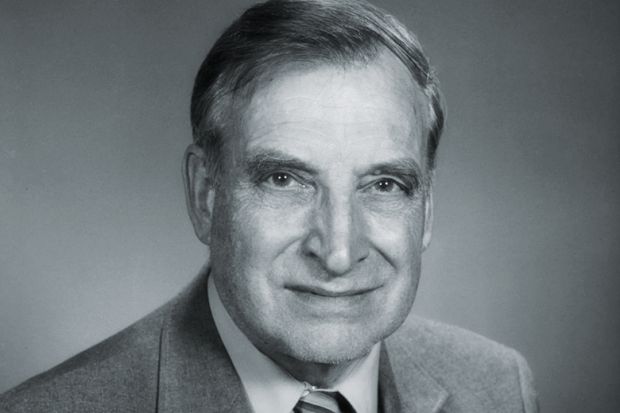Richard Wilson was born in Putney, West London on 29 April 1926 and educated at St Paul’s School. He secured a mathematical scholarship to Christ Church, Oxford, where he gained a BA in physics (1946) followed by a DPhil (1950). He went on to serve as a research lecturer there from 1949 to 1954, although this included periods as a research associate in the US at both the University of Rochester (1950-51) and Stanford University (1951-52), and also as a research officer in Oxford’s Clarendon Laboratory (1952-55).
In 1955, however, Professor Wilson moved to Harvard University as an assistant professor of physics. He was promoted to a full professor in 1961, chaired the physics department (1982-85) and eventually retired as Mallinckrodt professor of physics emeritus in 1999. Despite spending more than two-thirds of his life in the US, he retained some very English interests in railways, Morris dancing, and folk and music hall songs.
An expert in experimental particle physics, Professor Wilson was particularly interested in collisions between particles at very high speeds and proved instrumental in ensuring that he and his fellow physicists had the best facilities for working in such fields. He led the upgrade of Harvard’s proton cyclotron, where he explored interactions between nucleons. When it became obsolete for its original experimental purposes, he helped to ensure that it was adapted for the treatment of cancerous tumours.
Along with colleagues at Harvard and the Massachusetts Institute of Technology, he designed and constructed the Cambridge Electron Accelerator synchrotron, which he then used to probe nucleonic structures.
Beyond Harvard, Professor Wilson helped to create the Fermi National Accelerator Laboratory (Fermilab) in Batavia, Illinois, where he continued his research on nucleonic structure using high-energy muon beams. Later collaborations took him to Cornell University and the Continuous Electron Beam Accelerator Facility in Virginia.
Alongside this rich scientific life, Professor Wilson was actively involved in a number of humanitarian causes. He often travelled to the USSR in the belief that direct contacts could help prevent war, although he boycotted conferences there after dissident Soviet physicists were sent into exile. He studied nuclear power safety and environmental carcinogens, and took a PBS film crew to Chernobyl after the disaster. He also started a programme for providing arsenic-free water from a village well in Bangladesh.
Professor Wilson died on 18 May and is survived by five sons, a daughter and three grandchildren.
Register to continue
Why register?
- Registration is free and only takes a moment
- Once registered, you can read 3 articles a month
- Sign up for our newsletter
Subscribe
Or subscribe for unlimited access to:
- Unlimited access to news, views, insights & reviews
- Digital editions
- Digital access to THE’s university and college rankings analysis
Already registered or a current subscriber? Login







